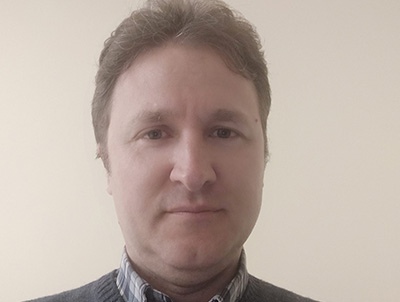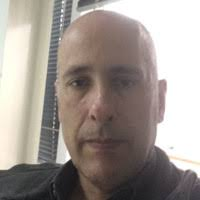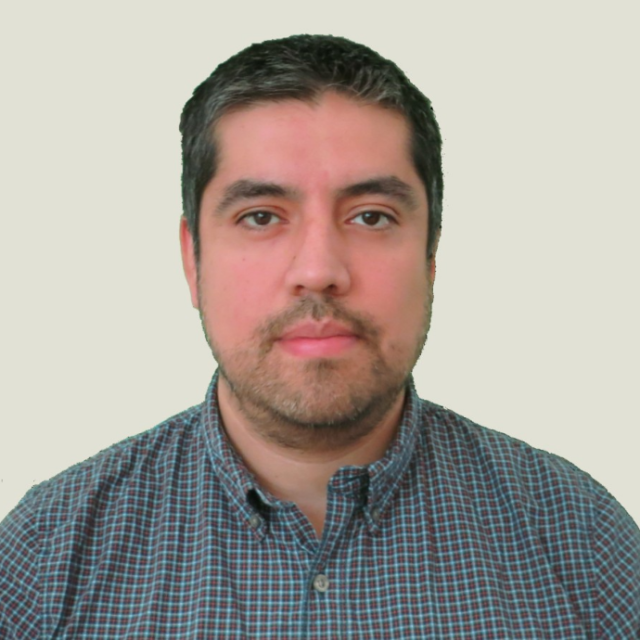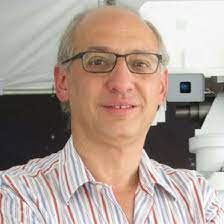AERONAUTICS AND SPACE
TECHNICAL PROGRAM COMMITTEE
| Chair | Co-Chair | Co-Chair | Co-Chair |

Pablo Marino Belcaguypmarino@conae.gov.ar
Pablo Marino is an electronic engineer from the Faculty of Engineering of the Universidad de Buenos Aires (UBA) with a postgraduate degree in Telecommunications and specialization in the Space Area. IEEE member, president of the Argentine chapter of Electromagnetic Compatibility (EMC), Antennas and Propagation. He has worked as a teacher in technical schools and universities, in undergraduate and postgraduate courses. He practiced engineering for several years in the private sphere. Since 2006, he has worked in the aerospace area at the National Commission for Space Activities (CONAE). He has worked throughout the development of the SAOCOM mission and participated as a collaborator in the SACD and SABIA-Mar missions. It currently develops and executes research, development and innovation (IDI) projects within the organization, and some of them together with other institutions. His main field of work has been the area of systems and laboratory tests in the area of EMC and RF electronics, particularly applied to ground and flight radars. One of his greatest interests is to understand and help improve performance and good teamwork practices, which is why he has spent several years studying the subject, taking specialization courses on these topics and applying it within the teams he has had in charge. |

Dra. Abigail Ganopolabigail.ganopol@gmail.com
She has a PhD in Physics from the Faculty of Exact and Natural Sciences, University of Buenos Aires. She works in the aerospace industry since 2009, your main field of expertise being LEO Satellite Missions Operations design, development, validation and execution. She has served as Flight Engineering for Operations Group coordinator of the SAC-D/Aquarius mission, and then Mission Operations Manager of SAOCOM 1 and SABIA-Mar (currently). As a manager she is am deeply committed to improving my area’ s performance and teamwork best practices. For this reason, she has devoted several years to knowledge management, focusing on team members’ training and lessons learned collection, processing and dissemination. She is a professor in Aerospace Master’s degree careers. Received the CERTIFICATE OF APPRECIATION of the Aquarius/SAC-D Mission: “In recognition of your outstanding work supporting the Aquarius mission and launch of the Aquarius/SAC-D Observatory”; delivered by National Aeronautics and Space Administration (NASA) y Jet Propulsion Laboratory (2013). |

Ing. Gustavo Boadogboado@arsat.com.ar
Technician and engineer in electronics received at FIUBA. In 1995 he was selected along with 10 other engineers from all over the country to be trained in Europe in space systems to integrate the operations engineering group of the first Argentine GEO satellite: the Nahuel 1A. He actively participated in the development of the Arsat 1 and 2 and currently leads the Arsat guidance, navigation and control group. His work includes orbital dynamics, avionics, software, launchers and propulsion. |

PhD. Juan Pablo SaldíaJuan Pablo Saldía has been an Adjoint Professor (Profesor Adjunto) since 2020 with the Department of Aeronautics, Faculty of Exact, Physical and Natural Sciences at Universidad Nacional de Córdoba (UNC). From this institution, he earned an undergraduate degree in Aeronautical Engineering in 2009, Master in Aerospace Engineering summa cum laude in 2012 and Dr. in Engineering Sciences in 2015. His research interests center on the development, implementation and application of computational fluid dynamics techniques in areas such as atmospheric reentry aerothermodynamics of space vehicles, blast effects and wind loads on oil storage systems among other aerospace, mechanical and civil engineering problems. He has participated as a member of research projects financed by Secretary of Science & Technology of UNC (SECyT-UNC), CONICET, Ministry of Science, Technology and Innovation (MINCYT) of Argentina and Ministère de l’Enseignement Supérieur et de la Recherche of France. |
DISTINGUISHED SPEAKERS

Ing. Alejandro PopovskyDean of the Faculty of Engineering of the University of Palermo. Director of the LABSAT IoT Project. Electronic Engineer (UBA). He has participated in conferences and published various papers in the areas of Neural Networks, VLSI, Performance in IP Networks, and Voice over IP. His research includes Neural Networks in VLSI (UBA), Exponential Calculus (UP), Measurement of Demand and Capacity in IP Networks (UP), Electromagnetic Wave Incidence Angle Detector (UBA). |

PhD. Leonardo RegoliLeonardo Regoli completed his bachelor degree in electronics engineering at the Universidad Central de Venezuela. After working for three years as a research and development engineer at a private company in Caracas, he completed his M.Sc. studies in space science and technology at the Julius-Maximilians Universität Würzburg in Germany and the Luleå Tekniska Universitet in Sweden. After finishing his studies, he worked as a research assistant in the field of computer vision applied to the detection of non-collaborative objects in space. Following that, he completed his PhD studies at the University College London in the UK and the Max Planck Institute for Solar System Research in Germany, studying the interaction of Titan with the Saturnian magnetosphere. After a 3-year postdoc at the University of Michigan studying the interaction of Mars with the solar wind, he joined the Johns Hopkins Applied Physics Laboratory in Maryland, where he actually works as a researcher studying different aspects of magnetospheric interactions with the solar wind, as well as in the development and calibration of particles (electrostatic analyzers and energetic neutral atom cameras) and fields (magnetometers) instruments. |

Ing. Miguel San MartínMiguel San Martin was born the 6 th of January of 1959 in his family farm in Villa Regina, Río Negro and he grew up in Bs. As. After finishing his school studies at the Industrial Pío Nono High School, he went to the USA to carry on with his studies and to fulfill his dreams of contributing with the NASA space exploration. He graduated with summa cum laude honors from Syracuse University with the degree of Electronic Engineer and from Massachusetts Institute of Technology with a Master in Aeronautics and Astronautics Engineering. He was recruited at the NASA Jet Propulsion Laboratory which specializes in the robotic planetary exploration where he has been working for 37 years. His field is the Guidance, Navigation and Control |

Ing. Gustavo Boadogboado@arsat.com.ar
Technician and engineer in electronics received at FIUBA. In 1995 he was selected along with 10 other engineers from all over the country to be trained in Europe in space systems to integrate the operations engineering group of the first Argentine GEO satellite: the Nahuel 1A. He actively participated in the development of the Arsat 1 and 2 and currently leads the Arsat guidance, navigation and control group. His work includes orbital dynamics, avionics, software, launchers and propulsion. |
DESCRIPTION
The Aeronautics and Space program deals with Engineering systems, design, creation, integration and operation of complex systems for space, atmosphere, ocean and terrestrial environments.
| SUGGESTED SUBTOPICS |
| For this topic, the following subtopics are suggested. Please note that you may send your paper beyond the scope of this list. In such a case, you must specify, in submission web form, the new subtopic that you consider your paper belongs to, as per instructions in Tutorial for Paper Submissions. |
- Autonomous flight.
- Avionics
- Celestial mechanics
- Communication networks tolerant of delays and interruptions.
- Control of the ground segment.
- Dynamics of satellite flight.
- Flight control
- Flight in formation.
- Guidance, navigation and control systems.
- Internet of things for space solutions.
- Mobile electric power.
- Optical spatial communications / RF modeling.
- Orbit Determination
- Orbital and attitude control.
- Propulsion systems
- Protocols, applications and concepts for space networks.
- Radar systems.
- Satellite launch and injection systems.
- Satellite platforms distributed.
- Satellite systems.
- Simulation and Command.
- Small satellites
- Solar energy.
- Sonar systems.
- Space Communications
- Space mission analysis.
- Structures of spaceships.
- Telemetry
- Testing, validation and verification.
- The space environment
- Thermal control
ACCEPTED ARTICLES
ID |
Title |
Author |
| 2252 | Low-cost Test System for 1U CubeSat Attitude Control with Reaction Wheels | Pablo Raul Yanyachi, Hammerly Mamani-Valencia and Brayan Antonio Espinoza-Garcia |
| 2777 | Comparación de algoritmos de acoplamiento velocidad-presión para problemas no estacionarios del flujo alrededor de un cilindro circular | Mauro Grioni, Sergio Elaskar, Pascal Bruel and Anibal Mirasso |
| 2935 | Non-Causal Integrated Navigation for Airborne SAR Sytems | Luciano Pega and Martı́n España |
| 3518 | Adaptive Extended Kalman Filter for Integrated Navigation in a Satellite Launch Vehicle | Victor Canepa, Pablo Servidia and Juan Giribet |
| 6413 | Non-stationary electromechanical model for the evaluation of the behavior of ablative pulsed plasma thrusters | Emmanuel Gómez, Manuel Saravia, Walter Castelló and Sergio Elaskar |
| 6795 | Considerations on the enthalpy variation in steady and unsteady gas dynamics flows | José Tamagno, Lucas Monaldi, Sergio Elaskar and Luis Gutiérrez Marcantoni |
| 7851 | PANSAT Mission Operations Concept | Valeria Navarro and Abigail Ganopol |
| 7986 | Simulación mediante OpenFOAM de la reflexión de ondas de choque en superficies sólidas curvas | Luis Felipe Gutierrez Marcantoni, Sergio Elaskar and José P. Tamagno |
| 8080 | Explosions and detonations their numerical simulations, similitudes, and differences. | Luis Felipe Gutierrez Marcantoni, Sergio Elaskar and José P. Tamagno |
| 8283 | Software Architecture Design of Distributed Satellite Systems Test Bed | Ignacio Santiago Husain Cerruti, Martin Espana and Pablo Servidia |
| 9173 | Navegación GPS Absoluta y Relativa para Vuelo Satelital en Formación. | Juan Diego Lavirgen, Martin España and Jose Relloso |
| 9260 | Autonomous Restricted Low-Thrust Orbit Control and Orbital Elements Filtering | Tomás Ignacio Burroni and Pablo Servidia |
